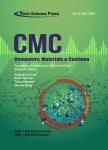Shared Cache Based on Content Addressable Memory in a Multi-Core Architecture
作者机构:Computer Systems EngineeringArab American UniversityJenin240Palestine
出 版 物:《Computers, Materials & Continua》 (计算机、材料和连续体(英文))
年 卷 期:2023年第74卷第3期
页 面:4951-4963页
核心收录:
学科分类:08[工学] 0805[工学-材料科学与工程(可授工学、理学学位)] 081201[工学-计算机系统结构] 0812[工学-计算机科学与技术(可授工学、理学学位)]
主 题:Multi-core processor shared cache content addressable memory dual port CAM replacement algorithm benchmark program
摘 要:Modern shared-memory multi-core processors typically have shared Level 2(L2)or Level 3(L3)caches.Cache bottlenecks and replacement strategies are the main problems of such architectures,where multiple cores try to access the shared cache simultaneously.The main problem in improving memory performance is the shared cache architecture and cache replacement.This paper documents the implementation of a Dual-Port Content Addressable Memory(DPCAM)and a modified Near-Far Access Replacement Algorithm(NFRA),which was previously proposed as a shared L2 cache layer in a multi-core processor.Standard Performance Evaluation Corporation(SPEC)Central Processing Unit(CPU)2006 benchmark workloads are used to evaluate the benefit of the shared L2 cache layer.Results show improved performance of the multicore processor’s DPCAM and NFRA algorithms,corresponding to a higher number of concurrent accesses to shared memory.The new architecture significantly increases system throughput and records performance improvements of up to 8.7%on various types of SPEC 2006 benchmarks.The miss rate is also improved by about 13%,with some exceptions in the sphinx3 and bzip2 benchmarks.These results could open a new window for solving the long-standing problems with shared cache in multi-core processors.



